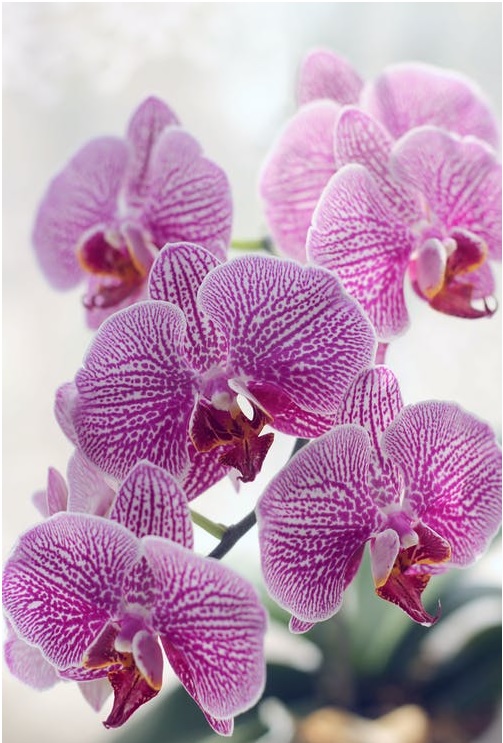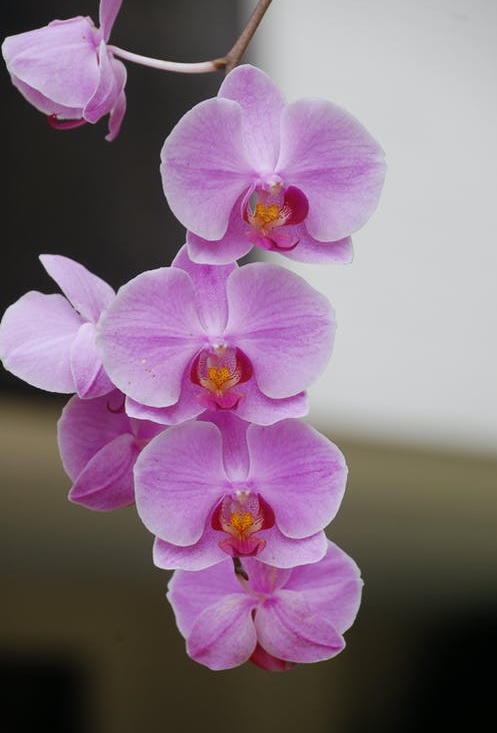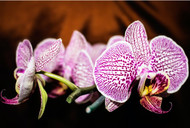Phalaenopsis Orchids for Sale: Phalaenopsis Orchid Care 101
Apr 8th 2022
Phalaenopsis orchids, which belong to the genus Phalaenopsis and are often affectionately referred to as Moth orchids, Phal orchids, or Phals, are among the most popular varieties of orchids in the world.
Officially, there are 63 species in the genus, but these have been extensively cultivated and hybridized by horticulturists and there are thousands of popular cultivars in the world.
Phals are popular for their succulent foliage, bright, colorful blooms, many of which are fragrant, as well as for the fact that some cultivars can be encouraged to bloom all year when given the proper care. Phals are also popular because they are tolerant of repotting, unlike many other, more sensitive cultivars.
If you’re thinking about picking up some Phalaenopsis orchids for sale and growing them, here’s a quick primer on what you need to get started.
Potting Considerations
In the wild, Phals grow on tree trunks and limbs as epiphytes. They live in a variety of tropical locations throughout the world.
In captivity, Phal orchids prefer a moist, neutral-to-slightly-acidic, bark-like potting medium with excellent ventilation and drainage. Because of the fact that they grow on tree bark in the wild, many orchid potting mixes designed for Phals are marketed as “Orchid bark,” and are made from chipped or shredded tree bark. This closely replicates their natural growing medium.
Before planting Phals, be sure to pix some orchid moss, charcoal, or coconut fiber in the mix. This will help with moisture retention as Phals, like many orchids, are intolerant of dry conditions and need fairly high humidity conditions to flourish.
Regardless of the orchid medium you choose to use, and what you include with it, make sure there is plenty of air circulation around the roots. Plants absorb oxygen from the atmosphere through their roots and need it to stay alive - orchids especially - so make sure the mix is loose, drains well, and has plenty of airflow.

Light and Temperature Considerations
Most Phalaenopsis orchids do very well in “bright shade,” by which we mean that they will do well indoors with plenty of sunlight as long as the light is indirect. Direct sunlight will burn the leaves and discourage not only blossoming but overall plant health.
A table in a well-lit room is all that most Phals need. In the winter, you can place Phals by a south-facing window where they will get some direct light since in the winter the sun’s light is weaker.
You can sometimes tell if a Phal is getting enough sunlight from the color of the leaves. Light green leaves are best; dark green leaves are getting too little light and any chlorosis - yellowing or reddening of the leaves - occurs in response to overexposure.
Phals, like most other orchids, love it warm. Between 75 and 85 degrees is best for active growth phases, and plants will flourish best in these warmer temperatures. However, they can learn to adapt to cooler indoor temperatures between 65 and 75 degrees, although growth will be slower.
Watering and Humidity Management
Phalaenopsis are intolerant of dry soil and dry conditioners, generally. Phals tend to grow some of their roots above the surface of the medium; whenever these turn silver or white or the medium is no longer damp, run warm water over the roots and medium. Run warm water over the roots several times, allowing it to drain completely between each application.
A quick trick to remember is this: light green roots are well-watered, silver or white roots need water. Do not allow Phal roots to sit in standing water, and do not allow the orchid bark to become saturated. This will cause root rot and can kill the orchids.
Phals, like many other species of orchids, flourish in high-humidity conditions and will grow roots about the growing medium - do not cut these off - they are called aerial roots and are normal for a healthy plant.
Feeding Phalaenopsis Orchids
Feeding Phals requires a little insider knowledge. Most fertilizers are nitrogen-rich, which will promote foliation and can actually inhibit flower spike formation.
Therefore, it is generally not a good idea to feed Phals while they are blooming. They also don’t need fertilizer during the winter (when they typically bloom) or in periods of slow growth.
During active growth periods, such as in the spring and summer, you can use a special orchid fertilizer and apply it about once every month or so (as indicated by the specific manufacturer instructions), although some growers prefer to apply it more frequently, about every three weeks.
Phals are not heavy feeders but healthy foliage and root growth will increase the likelihood of the plant developing a flower spike.
Spikes: What Are They, What You Need to Know
Phalaenopsis orchids produce flowers on tall structures known as flower spikes that grow out of the center of their basal foliage. The spikes usually emerge after a period known as the growth phase, which typically occurs through the warmer months - therefore, most Phals will naturally produce flower spikes in the fall.

One way to encourage the plant to develop a flower spike is by intentionally exposing the Phal to slightly lower temperatures during the nighttime - down to 55 or 60 degrees. This contrast actually encourages the plant to start blossoming.
When spikes emerge, do not feed the plant but continue to water as usual, allowing for good airflow around the roots. The spikes will typically develop through the winter, with the flowers finally forming in late winter or early spring. Some cultivars will keep their blossoms through the spring and into the summer, after which point they will drop off and the plant will begin growing new leaves and roots to support the next flower spike that will develop the following year or as induced.
Do Phalaenopsis Orchids Bloom Year-Round?
It’s not impossible to encourage some Phals to bloom year-round, although you need to know a few tricks to encourage them to continue blossoming or to develop a new flower spike “out of season.”
After the last blossoms have dropped, cut down the flower spike close to the base with a sterile blade. Then, increase watering frequency to 2-3 times per week and use an orchid fertilizer to encourage reblooming. After a few weeks to a month or so of this routine, start introducing the plant to colder nighttime temperatures, between 55-65 degrees. That will greater increase the plant’s chances of developing another flower spike before the following fall.
Phalaenopsis Orchids for Sale: What You Need to Get Started with Phalaenopsis
Interested in getting started growing Phalaenopsis orchids at home? It can be a highly enjoyable and rewarding pastime from which you’ll learn a lot, too.
What you’ll need, at minimum, are:
●An orchid pot or basket that allows for good drainage and airflow.
●A suitable orchid potting medium, such as orchid bark, as well as some orchid moss for moisture retention.
●Orchid fertilizer
●And of course, orchids - you can browse our collection of live Phalaenopsis orchids for sale among our other cultivars via the previous link.
If you have any questions about our Phalaenopsis orchids for sale or any of our products, please feel free to reach out to us and we would be happy to help - you can get in touch with us at 770-883-5579.

